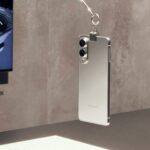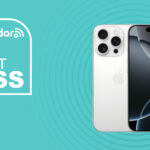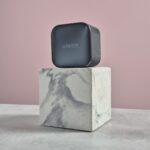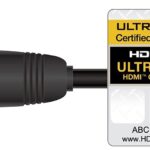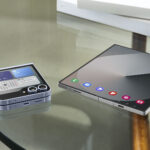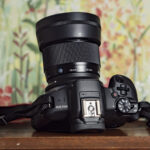Why you can trust TechRadar
We spend hours testing every product or service we review, so you can be sure you’re buying the best. Find out more about how we test.
Chuwi AuBox 8745: 30-second review
Having seen a few Chuwi laptops recently, I was interested to see a Mini PC from the same stable.
The Chuwi AuBox comes in three flavours. The bottom rung offers an AMD 6000 series processor, the one reviewed here is an 8000 series, and the top of the line is an Intel variant with a 13th-gen i9 mobile CPU.
The AuBox 8745 model reviewed here probably has the newest silicon, although the CPU and GPU combination is almost identical to the AMD Ryzen 7 8845HS that first appeared in 2023.
That said, this is a punchy platform in an elegant aluminium case that is easily upgradable, and with support for up to four screens via DisplayPort, HDMI, USB 4.0 and USB-C, it offers fantastic flexibility.
Supplied with Windows 11 Pro preinstalled, the Chuwi AuBox 8745 is a mini PC that is ready to deploy out of the box and works equally well on the desktop or mounted on the back of a monitor.
There is only one flaw, and that is that the default SKU offers a single 16GB memory module, a choice that significantly impacts the GPU performance on AMD Radeon 780M machines.
Chuwi needs to quickly fix this issue with dual 8GB modules or increase the memory to 32GB (dual 16GB) if it’s to have a chance to make it into our best mini PC round-up.
Chuwi AuBox 8745: Price and availability
- How much does it cost? $440/£332
- When is it out? Available soon
- Where can you get it? Currently, this machine can be obtained directly from Chuwi.
The asking price of this machine is jaw-dropping. According to the Global Chuwi website, it costs £331.40 to UK customers, plus shipping and import duty. While it isn’t yet on the Chuwi USA website, it looks like the price for American customers will be $440, but again, that doesn’t include delivery, sales tax and potential tariffs.
To compare that with a similarly specified model from GMKtec, the K8, that’s more than the barebone SKU GMKtec has, but cheaper than one with memory and storage. Or rather, it would be if GMKtec had any stock of that model. They have a NucBox K8 Plus model, a redesign that costs $522.99 for the 32GB model with 1TB of storage.
An alternative with the 32GB/1TB specification that uses the Ryzen 7 8845hs chip costs $550 from Geekom for its A8 series.
Most Mini PC makers have an AMD machine that uses the 8845HS, but only a few use the 8745HS, like the Beelink SER8. One of those costs about $500 with 32GB of RAM and 1TB of storage, which is almost exactly what an AuBox 8745HS would cost with the RAM and storage upgraded.
Therefore, the Chuwi AuBox 8745 seems like a bargain until you realise that once it’s been upgraded, it’s the same price as other makers are asking for the typical spec.
Chuwi AuBox 8745: Specs
|
Item |
Spec |
|---|---|
|
CPU: |
AMD Ryzen 7 8745HS (8 cores, 15 Threads) |
|
GPU: |
AMD Radeon 780M |
|
RAM: |
16GB DDR5-5600MHz (16GB x 1) expandable to 64GB (2x 32GB) |
|
Storage: |
512GB M.2 2280 PCIe Gen 4 |
|
Expansion: |
1x M.2 2280 is free for expansion, Dual SODIMM memory slots |
|
Ports: |
2x USB 3.2 Gen 2 Type-A, 1x USB 3.2 Gen 2 USB-C,1x USB 4.0, 2x USB 2.0, 2x HDMI 2.1,1x Displayport 1.4, 1x universal audio jack |
|
Networking: |
2x 2.5GbE LAN, WiFi 6, Bluetooth 5.1 |
|
OS: |
Windows 11 Pro (pre-installed) |
|
Base Power: |
35-54 W (configurable) |
|
PSU: |
19V 6.32A 120W |
|
Dimensions: |
154 x 152 x 45 (mm) |
Chuwi AuBox 8745: Design
- Mostly metal Mini PC
- USB ports on side
- Easy internal access
Considering its relatively low cost, the build quality of the AuBox is impressive. While there is some plastic used inside, the case cover that covers five of the six sides is made from a milled aluminium block.
Not only does this look rather slick and a bit like an Apple design, but it also provides a means for heat inside to be radiated by the case.
Where this Mini PC is slightly divergent from other common designs is that the front face has no ports, only a power button. The ports normally on the front face have been transferred to the right side, and these include three USB ports and a Kensington security slot. The rest of the ports are more conventionally placed on the back, where you will find the monitor outputs (HDMI and DisplayPort), more USB and dual 2.5GbE LAN ports.
The side placement of ports is beneficial for keeping the cabling clutter to a minimum, but is also helpful for monitor-mounting the AuBox. When attached by the included VESA mounting plate, it is possible to have the power button facing up, the mouse and keyboard connections to the right side and the other ports facing down, which is ideal.
Access to the inside is so easy, with four screws accessible via holes in each rubber foot that release the metal cover.
Once the top is released, both the memory SODIMM slots and the M.2 2280 slots for NVMe storage are accessible.
There are two memory slots, one occupied with a single 16GB DDR5 module. To expand the memory, you can either add another module or remove the existing memory and replace it with a bigger capacity.
In theory, this platform can handle up to 256GB of RAM. However, currently, the largest DDR5 SODIMM available is 48GB, making the maximum potential memory of 96GB. The 8745HS doesn’t support ECC memory, for those wondering about making a NAS from this platform.
One especially useful feature is that the two M.2 NVMe slots are both 2280-sized, enabling this machine to take the least expensive storage in the most common form factor. By default, one of these slots is already occupied with a 512GB module, and that is connected thermally to the metal case with a silicon thermal pad.
What’s a little disappointing is that no second thermal pad is included in the box. That the pad touches the case also indicates how close the NVMe is, meaning that it wouldn’t be possible to put a SSD with an integrated heatsink inside and screw the lid down.
As most 4TB SSD designs have these heatsinks, that probably limits these slots to having 2TB drives installed, if you can find some without heatsinks attached. But, on a positive note, because there are two slots, cloning the operating system to a larger capacity drive is easy, and doesn’t require the use of an M.2 USB caddy.
For the most part, the construction, design, and ergonomics of the AuBox are excellent, and they are exactly what most mini PC purchasers would think are optimal.
Chuwi AuBox 8745: Features
- AMD Ryzen 7 8745HS (8 cores, 16 Threads)
- 16 PCIe Lanes
- Single USB 4.0 port
The AMD Ryzen 7 8745HS is practically identical to the Ryzen 7 8845HS, which was launched only eight months before its July 2024 appearance. Its specification is only different in that the 8845HS has a 4% greater Turbo Boost frequency (5.1 GHz vs 4.9 GHz).
Oddly, the 8745hs isn’t mentioned on the AMD site, which might hint that it was only made available to OEMs as a lower-cost option. It might be that AMD had some bins of 8845HS chips that didn’t quite pass the 5.1GHz clock, but were perfect in all other respects.
Whatever the reason, the 8745HS delivers almost precisely the same performance and has all the 16 PCIe lanes that made its predecessor a hit with laptop and Mini PC makers.
However, with so many ports on this machine, some choices were forced, specifically with USB 4.0. There is only one port of USB 4.0, but that’s enough to connect a USB 4.0 dock or hub, and then connect a wide range of devices to that.
The platform can support two USB 4.0 ports, but including dual PCIe M.2 Gen 4 slots and dual 2.5GbE LAN ports, along with all the other USB, probably uses up all the PCIe lanes. Therefore, it appears that M.2 won out over a second USB 4.0 port.
That said, even with one USB 4.0 port, this system still has plenty of flexibility for hanging other equipment off this computer. It might even be possible to use a discrete GPU connected by USB 4.0 externally, although this is known to be inferior to OcuLink connectivity.
One real possibility is to use a USB 4.0 to 10GbE LAN port adapter, which would give this machine up to 15GbE of network bandwidth.
Looking at the AMD Ryzen 8000 series in general, these chips were originally designed for mobile use, but in the mini PC environment, they deliver performance comparable to mid-order desktop platforms. With enough memory and storage, this machine is suitable for most office tasks and can do this while remaining almost silent.
It is possible to spend much more money on a mini system and get some additional performance, but justifying that extra power against the cost might prove challenging.
Chuwi AuBox 8745: Performance
|
Mini PC |
Header Cell – Column 1 |
Chuwi AuBox |
GMKtec K8 |
|---|---|---|---|
|
CPU |
Row 0 – Cell 1 |
AMD Ryzen 7 8745H |
AMD Ryzen 7 8845HS |
|
Cores/Threads |
Row 1 – Cell 1 |
8C 16T |
8C 16T |
|
RAM |
Row 2 – Cell 1 |
16GB DDR5 (1x16GB) |
32GB DDR5 (2x16GB) |
|
Storage |
Row 3 – Cell 1 |
AirDisk 512GB |
1TB NVMe |
|
Graphics |
Row 4 – Cell 1 |
Radeon 780M |
Radeon 780M |
|
3DMark |
WildLife |
10604 |
16149 |
| Row 6 – Cell 0 |
FireStrike |
4600 |
7664 |
| Row 7 – Cell 0 |
TimeSpy |
1909 |
3102 |
| Row 8 – Cell 0 |
Steel Nom Lt. |
1681 |
N/A |
|
CineBench23 |
Single |
1808 |
1957 |
| Row 10 – Cell 0 |
Multi |
9777 |
11864 |
| Row 11 – Cell 0 |
Ratio |
27502 |
34563 |
|
GeekBench 5 |
Single |
23582 |
30270 |
| Row 13 – Cell 0 |
Multi |
1682 |
1764 |
| Row 14 – Cell 0 |
OpenCL |
14525 |
15691 |
| Row 15 – Cell 0 |
Vulkan |
8.64 |
8.9 |
|
CrystalDisk |
Read MB/s |
3265 |
5105 |
| Row 17 – Cell 0 |
Write MB/s |
2810 |
4390 |
|
PCMark 10 |
Office |
6391 |
7396 |
|
WEI |
Row 19 – Cell 1 |
8 |
8.2 |
This machine’s curious story was revealed in benchmarking, and it delivered an unexpected twist that I wasn’t expecting.
When I first received this machine, I checked back through all the Mini PC models I’ve tested to see if I had a machine that used the same 8745HS platform. Because of how reliatively new this silicon is, I didn’t, but I have tested one that used the incredibly similar 8845HS processor.
When I started to compare the results, and the difference was striking.
As I’ve already mentioned, the Ryzen 7 8745HS is almost identical to its older 8845HS brother with the exception of a few clock speeds. But at least on paper, these chips are so close that I wasn’t expecting any significant difference.
However, as you can see, the 8745HS in this mini PC is decidedly slower, especially when the test involves graphics.
The clue as to why is in the other significant difference that the GMKtec K8 has, and it’s the 32GB of DDR5 memory. After another round of tests, I determined this was the reason the K8 was so much better, and ironically, it wasn’t due to the amount of RAM, but how that memory had been added.
For those unfamiliar with DDR5, the SODIMM modules are inherently dual-channel, allowing a single module to offer greater performance by splitting a 64-bit-wide bus into dual 32-bit-wide channels.
The K8 had two SODIMMs, which, on the AMD Ryzen 8845HS, translated into four 32-bit channels, increasing the total bandwidth bus to 128 bits.
Conversely, the AuBox had a single SODIMM providing dual channel with 32-bits per channel, or 64-bit wide memory.
To prove this assertion, I took two 16GB DDR5 modules out of another Mini PC and swapped them for the single 16GB in the AuBox. The alternative memory was actually slower at 4800MHz than the 5600MHz original module.
The difference was spectacular. Where the Wildlife score was 10,604 with a single module, it leapt to 16,986 with two slower modules. That’s nearly a 70% improvement.
I made no other changes, and the only conclusion to make is that with a single stick of memory, the AuBox 8845 is a shadow of what it can be with two.
The other notable result in these tests is the SSD speeds, where the AirDisk 512GB module was much slower than the 1TB SSD in the K8. For whatever reason, I didn’t note the SSD module in the K8, but looking at the numbers, I can confidently say that the AirDisk NVMe is only a Gen 3, and the K8 had a Gen 4.
Maybe it was important for Chuwi to hit the price point it wanted, but it’s another thing about this machine I’d be tempted to swap before deployment.
These two choices make for a slightly odd conclusion. The AuBox 8745 could be a powerful platform if it hadn’t been undermined in the factory with a slow NVMe drive and only one memory module.
It’s easy enough to fix both these issues with a modest extra spend, but it would have been better if Chuwi had offered a SKU that better balanced price and performance.
Chuwi AuBox 8745: Final verdict
It’s been a while since I’ve seen a computer that was so well designed, built around an excellent platform and had the potential to deliver such a good user experience.
It is a shame that Chuwi then took such a solid foundation and let a couple of extremely poor choices entirely mess it up.
Clearly, the person who said that 16GB of memory in a single SODIMM had no idea of the implications of that choice, or didn’t care. The choice of the Gen 3 NVMe drive is also completely cost-driven, though less disastrous.
The AuBox 8745 is an excellent mini PC that, with the addition of a $40 SODIMM and a $35 NVMe, can compete with much more costly machines. Thankfully, it’s easy to upgrade, but it might have been better if Chuwi had asked a little more and pre-installed suitable storage and memory in the factory.
Should you buy a Chuwi AuBox 8745?
|
Value |
For the platform, this is an excellent price |
4 / 5 |
|
Design |
An elegant design that is easy to use and upgrade |
4 / 5 |
|
Features |
A punchy mobile Ryzen processor with decent integrated graphics and a good port selection |
3.5 / 5 |
|
Performance |
Kneecapped by poor memory and storage choices |
3 / 5 |
|
Overall |
A great design that’s been poorly configured by the makers |
4 / 5 |
Buy it if…
Don’t buy it if…
Also Consider
For more professional hardware, we’ve reviewed the best business computers.
Read the full article here



